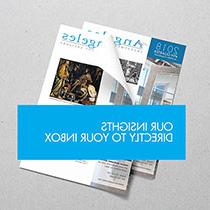Latest Blog: Fireside Reading - 03/01/2024
-
-
CIO INSIGHTS
-
CIO INSIGHTS
-
BACK TO CIO INSIGHTS
BACK TO ARTICLES & INSIGHTS HOME
-
-
-
![Michael Rosen]()
-
Investment Insights are written by Angeles' CIO Michael Rosen
Michael has more than 30 years experience as an institutional portfolio manager, investment strategist, trader and academic.
FIRESIDE READING
Published: 03-01-2024
Seven new selections for you – 3 fiction, 4 nonfiction – while it’s still fireside reading season. Enjoy!
Fiction

Baumgartner, Paul Auster
Baumgartner is a philosophy professor at Princeton, nearing retirement. This novel begins on an ordinary day where he has a list of mundane tasks to do: call his sister, repair the basement stairs, etc., when he burns his hand on an old pot he left on the stove This leads to a series of events that causes him to reminisce about his wife, Anna, who died 10 years earlier. His life with Anna is the heart of the story. The book is really about loneliness and grief, hope and love. This is a quiet, contemplative, beautiful novel from one of our greatest writers.

Waiting for Snow in Havana, Carlos Eire
This is a memoir of a boyhood in pre-Castro Cuba, and his subsequent exile to the United States still as a child. Eire recants his childhood with wonderful humor and keen observation of his extended family and friends. On that level alone this is a marvelous book. But he also gives a glimpse of upper-middle class life in pre-revolution Cuba, and what was lost when the country was turned upside-down. Funny and poignant, witty and sarcastic, this is a memorable book.

How I Won A Nobel Prize, Julius Taranto
A billionaire recluse, B.W. Rubin, bought an island off the coast of Connecticut and built The Rubin Institute, an academic haven for the anti-woke perpetrators who ran afoul of society’s norms, from committing microaggressions to statutory rape. Scientists, writers, artists, among the most accomplished and esteemed in their fields but whose actions have been “canceled” by society, populate this island. Helen, a post-grad working on superconductivity, is enticed to come to the Institute by her mentor, a Nobel Laureate in physics. Her husband, Hew, a radical left-wing activist, is appalled with the idea. The story is told from Helen’s perspective: the details of her scientific work, her shifting relationships with the men in her life, Hew, her mentor, her father, a celebrated author also at the Institute. There are philosophical passages on politics, religion, free will that frame our contemporary debates eloquently. Helen’s messy relationships, professional and personal, are universalized for the relationships we all have, and are told with poignancy and empathy. And humor, as Helen shows her wit in describing her life. A truly enjoyable book written with pace, relevancy and humor.
Nonfiction

How Life Works, Philip Ball
How does life work? Perhaps the common answer might be that DNA contains the “blueprint” for life, which it shares, via RNA, to the proteins that build life. There is some truth to this simplistic model, but it is hardly the whole picture. Much of the work creating life occurs at the cellular level, independent of genetic instructions. Philip Ball gives us a deep dive into current biology. There is a fair amount of science that may intimidate the general reader, but we are rewarded with some astonishing revelations. For example, it is possible to rearrange the face of a tadpole, so that the eyes are where the ears should be and the nose is where the mouth goes, but when that tadpole transforms into a frog, its face is as it should be, a beautiful frog you might want to kiss. This reconfiguration does not occur through genetics. Another point: you can bisect a flatworm, which is a fairly complex organism with a brain and nervous system, lengthwise or widthwise, or dissect into a hundred pieces, and each part will regenerate an entirely new, perfectly formed, flatworm. We are our genes is only partly true, and we don’t yet have the complete picture. This book goes pretty deep into biology, but it provides an excellent overview of our current understanding of how life works.

American Rascal, Greg Steinmetz
Jay Gould was possibly the most hated man in America, the robber baron who put his fellow scoundrels to shame. Yet he was undeniably brilliant, determined, and ruled the lawless wild west of Wall Street when there were no rules. This is a sympathetic, yet balanced, biography of Jay Gould, and more, a gripping narrative of the unfettered capitalism of the post-Civil War era in America. Gould did not endow universities or libraries, and his heirs squandered their massive inheritance, so Gould is largely unknown and forgotten today. But his story is uniquely American, and it is told here with verve.

Road to Surrender, Evan Thomas
Was the US right to drop the atomic bomb on Hiroshima? And again on Nagasaki? Would a demonstration of the bomb sufficed to persuade the Japanese to surrender? There are serious moral questions about the use of the atomic bombs that killed hundreds of thousands of civilians, but Thomas is persuasive in showing that the Japanese General Staff had no intention of surrendering. Even after the bombs were deployed, the military wanted to fight to the last man. Thomas gives us a detailed look at the diaries of three men during the last few months of the war to explain the internal Japanese debate and how their messages were received by US leaders. Henry Stimson, US Secretary of War, struggled with the moral consequences of the atomic bomb, and although he ultimately approved its deployment, worked to cooperate with the Soviets on atomic weapons post-war. Carl “Tooey” Spaatz, in charge of the US Air Force, also wrestled with the implications of the atomic bomb but never wavered in following orders to drop the bombs. Shigenori Togo was the Japanese Foreign Minister who argued passionately to surrender only to be thwarted by the military leadership. Only the unprecedented intervention by the Emperor resolved the dispute. The evidence is pretty clear that the atomic bombs contributed to the Japanese decision to surrender, and that an Allied invasion of Japan would have resulted in the loss of millions of lives. This is a riveting, important story told with pace and context.

Fire Weather, John Vaillant
Fort McMurray, in northern Alberta, had 90,000 inhabitants, everyone drawn to this remote, frigid place by the tar sands that lie underground. In May 2016, the largest fire in North American history ignited there, forcing the evacuation of all 90,000 people. Vaillant gives us a gripping, almost minute-by-minute drama of how the town came to realize that this was unlike any fire anyone had ever seen, the futile efforts to contain it and the desperate, panicked fleeing that ensued. There is the obvious irony that the consumption of fossil fuels both built this town and contributed to its demise, and a timely warning of the urgency of transitioning to renewable energy. The book offers a lesson in geology, heart-pounding terror and a glimpse of what our future holds.
PRINT THIS ARTICLERELATED ARTICLES
-
![Fireside Reading]()
Fireside Reading 10-18-2022
It's still beach reading weather in Southern California, but fireside reading seems more appropriate for mid-October. I ...
READ BLOG POST -
![Old Age]()
Old Age 10-16-2014
It's been 3 years since US equities have corrected more than 10%. But there's no law about how long rallies can ...
READ BLOG POST -
![Diversify]()
Diversify 02-19-2015
Each year for clients we update a very colorful graphic ranking the annual performance of various asset classes. Each ...
READ BLOG POST
-
-
We strive build portfolios of best-in-class investment managers across all asset classes. If you would like to be considered for our portfolios, please contact us using our manager inquiries form.
- MANAGER INQUIRIES
-
SUBSCRIBE TO ANGELES' INSIGHTS
Get the latest investment information and stay on top of market trends.
SUBSCRIBE -
CONTACT US
![Location: Los Angeles]()
SANTA MONICA
429 SANTA MONICA BLVD,
SUITE 650
SANTA MONICA, CA 90401
310.393.6300
GET DIRECTIONS -
![Location: New York]()
NEW YORK
375 PARK AVENUE,
SUITE 2209
NEW YORK, NY 10152
212.451.9240
GET DIRECTIONS -
![Location: Houston]()
HOUSTON
5151 SAN FELIPE ST,
SUITE 1480
HOUSTON, TX 77056
713.832.3670
GET DIRECTIONS


















